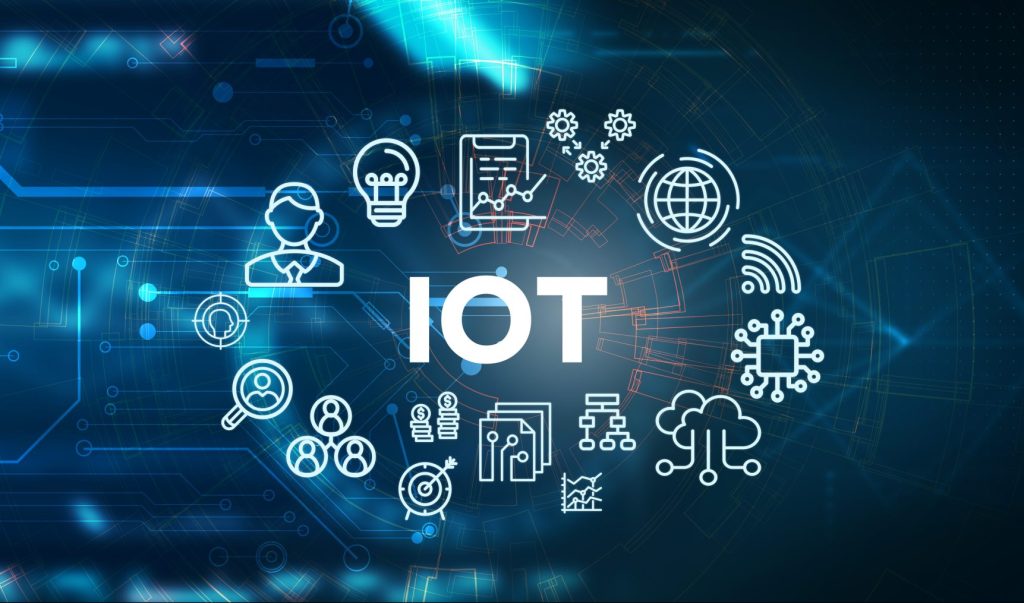Advanced IoT Cybersecurity Tactics to Safeguard Connected Devices
- ATMECS Content Team
- 3 Minutes Read
- Posted on Nov 13th, 2024
Introduction
IoT cybersecurity is the practice of protecting interconnected devices and systems from sophisticated cyber threats that target vulnerabilities. As the number of connected devices continues to skyrocket, so does the need for robust cybersecurity measures. At ATMECS, we’re at the forefront of developing cutting-edge IoT security solutions to protect your devices and data from ever-evolving threats.The IoT Cybersecurity Challenge
The IoT landscape presents unique security challenges due to the sheer volume and diversity of connected devices. From smart home appliances to industrial sensors, each device is a potential entry point for cybercriminals. Recent high-profile breaches, such as the Mirai botnet attack that turned thousands of IoT devices into a massive DDoS weapon, highlight the critical need for advanced security measures.
Key IoT Cybersecurity Strategies
To combat these threats, businesses must implement a multi-layered approach to IoT security. Here are some essential strategies:
- Device Authentication and Access Control: Implement strong, unique passwords and multi-factor authentication for all IoT devices. Utilize role-based access control to limit device permissions based on user needs.
- Encryption and Data Protection: Employ end-to-end encryption for all data transmitted between IoT devices and cloud services. Ensure that data at rest is also encrypted using industry-standard algorithms.
- Network Segmentation and Firewalls: Isolate IoT devices on separate network segments to contain potential breaches. Deploy next-generation firewalls capable of deep packet inspection for IoT traffic.
- Regular Software Updates and Patch Management: Maintain a rigorous schedule for firmware updates and security patches. Consider automated patch management solutions to ensure timely updates across your IoT ecosystem.
- IoT Security Analytics and Monitoring: Implement Security Information and Event Management (SIEM) systems tailored for IoT environments. Leverage AI and machine learning algorithms to detect anomalies and potential threats in real-time.

Let’s explore these strategies in more detail.
Emerging Trends in IoT Cybersecurity
As we look to the future, several emerging technologies are shaping the IoT security landscape:
- Blockchain for IoT Security: Distributed ledger technology is being explored to enhance device authentication and secure data exchanges in IoT networks.
- Edge Computing: By processing data closer to the source, edge computing can reduce latency and minimize the attack surface for IoT devices.
- Zero Trust Architecture: This security model assumes no trust by default, requiring strict verification for every device and user accessing IoT resources.
Best Practices for IoT Security in 2024
As we move into 2024, organizations must adapt to the evolving threat landscape. Here are key best practices to enhance your IoT security:
- Implement Device Identity Management: Use unique identifiers and digital certificates for each IoT device to ensure proper authentication and prevent spoofing attacks.
- Adopt AI-Powered Threat Detection: Leverage artificial intelligence and machine learning algorithms to identify and respond to sophisticated IoT-specific threats in real-time.
- Embrace Security by Design: Integrate security measures from the inception of IoT projects, rather than as an afterthought. This includes secure boot processes, hardware-based security features, and built-in encryption capabilities.
- Conduct Regular IoT Security Audits: Perform comprehensive security assessments of your IoT ecosystem at least quarterly to identify vulnerabilities and ensure compliance with evolving regulations.
- Implement IoT-Specific Security Policies: Develop and enforce policies tailored to IoT devices, covering aspects such as data privacy, device lifecycle management, and incident response procedures.
- Leverage Cloud-Native Security Solutions: Utilize cloud-based security platforms designed specifically for IoT environments to benefit from scalable, always-up-to-date protection.
- Prioritize Supply Chain Security: Vet IoT device manufacturers and service providers thoroughly to ensure they adhere to stringent security standards throughout the supply chain.
ATMECS’ Approach to IoT Cybersecurity
At ATMECS, we understand that effective IoT security requires a holistic approach. Our comprehensive IoT security framework addresses the entire lifecycle of connected devices, from design and deployment to ongoing management and eventual decommissioning.
Conclusion
As the IoT continues to expand, the importance of robust cybersecurity measures cannot be overstated. By implementing advanced tactics such as strong authentication, encryption, network segmentation, and AI-powered monitoring, businesses can significantly reduce their risk exposure.
ATMECS is committed to helping organizations navigate the complex world of IoT security. Our team of experts is ready to assist you in developing and implementing a comprehensive IoT security strategy tailored to your unique needs.
Ready to start your cloud migration journey? Contact ATMECS today to learn how we can help you navigate the complexities of cloud adoption and drive your digital transformation forward.



